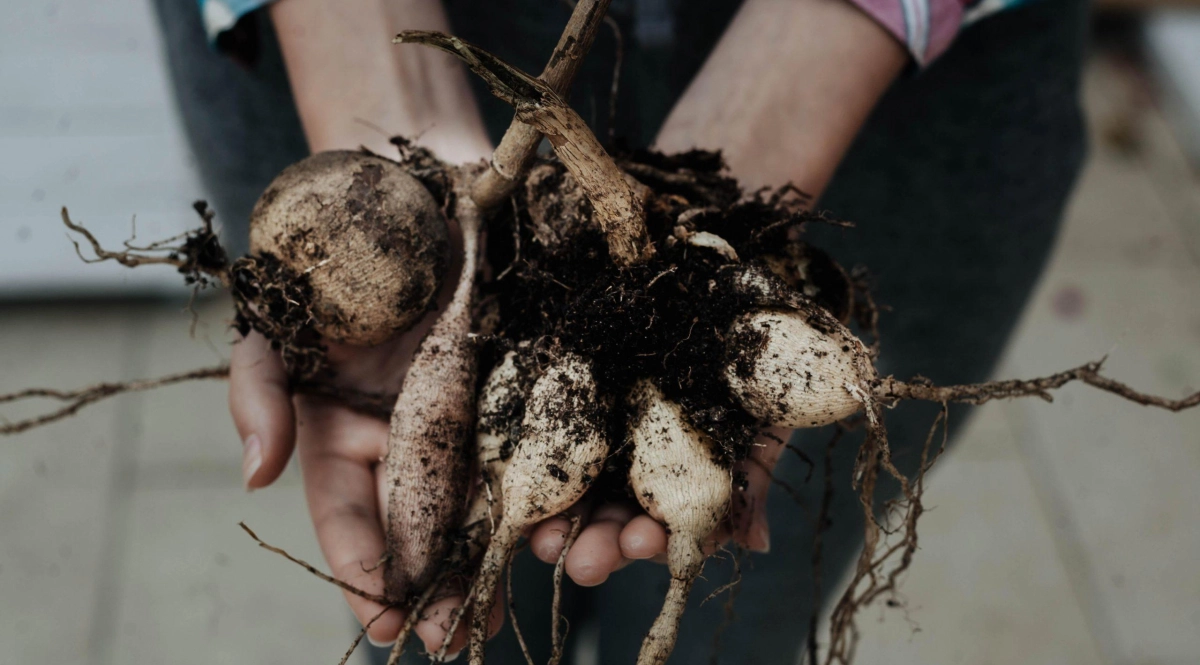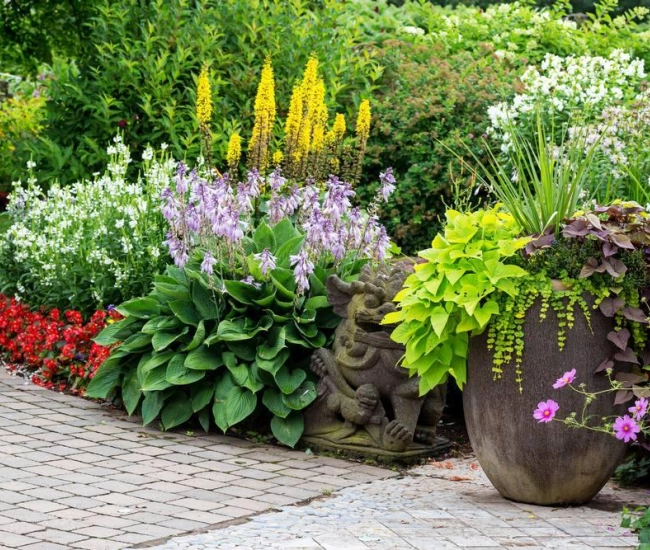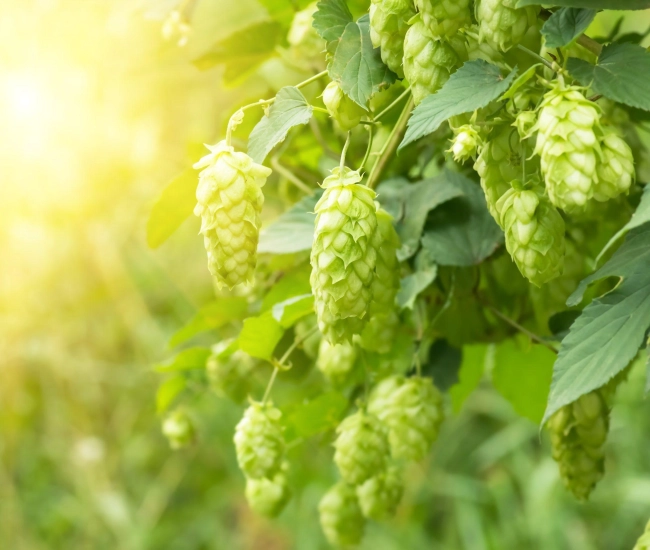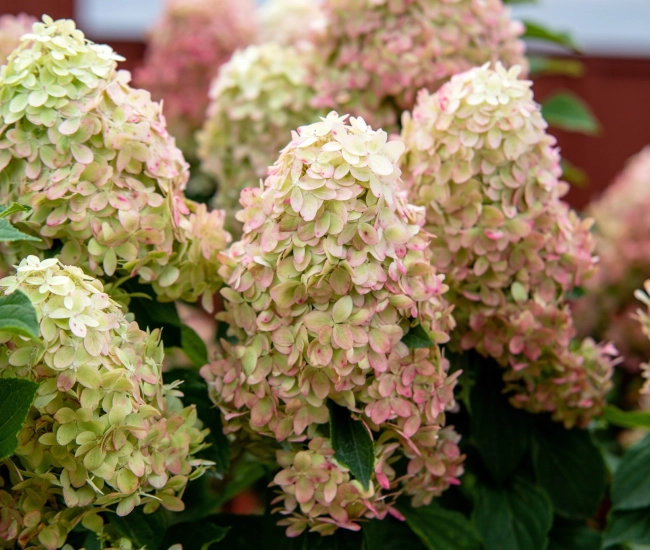
Bring in the tender bulbs… The nights are longer and the temperatures cooler, yes, autumn is at our doorstep. Gardeners are busy with the last tasks before the big freeze. Shrubs and perennials are cleaned, annuals composted, but what do we do with our tender bulbs that have now withered? Discover my tips to make it happen.
Steps to store bulbs indoors for the winter
• Remove the tender bulbs and tubers from their pot or the ground and let them dry in the sun to allow the soil to detach more easily, taking care to keep about 15 cm of stem.
• Gently clean the bulbs once the soil has dried, without washing them (brush gently).
• Place your soil-free bulbs in a paper bag or a cardboard box.
• Cover them with slightly damp peat moss and close the bag or box.
• Store everything indoors in a cool, dry place, away from light.
• Check the firmness of the bulbs during the winter and, if necessary, rehydrate the peat moss.
The division of tender bulbs is ideally done before spring planting and not before wintering, to reduce the risk of rot.
And we plant the hardy bulbs
At this time of year, garden centers are full of firm and healthy hardy bulbs just waiting to brighten up your garden in spring. You have plenty of choices, but be careful, it is still too early to plant them as they risk coming out of their dormancy and starting to germinate, which is not desired. Mid-October is the ideal time to introduce them into your flowerbeds.
• After purchasing (in September), keep your bulbs dry and cool until planting.
• In mid-October, loosen the planting area to a depth of 15 to 20 cm.
• The planting depth is usually 3 times the height of the bulb.
• For a spectacular effect, plant your bulbs in groups (5 to 10 bulbs depending on the desired effect).
• Make sure the base of the bulb is flat at the bottom of the hole and firmly anchored.
• Cover with soil and water.
• Mark the location with a stick to avoid damaging the new shoots in spring. Beware of squirrels! These little rodents love hardy bulbs (especially tulips). How to deter them from nibbling on your plantings…
• At planting, put ground blood meal at the bottom of the hole (the smell repels them).
• You can also cover the planting area with a metal mesh. Lightly cover the bulbs with soil, place the mesh, and finish filling the hole. Firmly pack the soil and water.
• Daffodils, narcissus, fritillaries, and crocuses are not eaten by rodents, consider mixing them with your other bulbs.
Besides tulips and daffodils, there are many hardy bulbous plants such as: Allium giganteum,
Tips and advice



